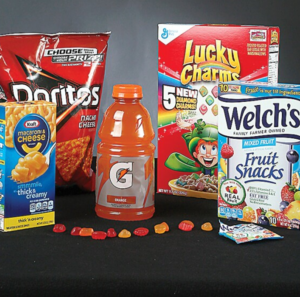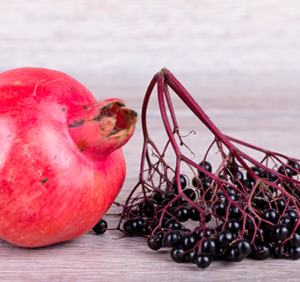Red food dye: Toxic or tame?
The Dirt
The FDA's recent ban of Red Dye No. 3, a synthetic food coloring derived from petroleum, addresses consumer concerns about its perceived health risks.
Nutrition
Red food dye: Toxic or tame?
The Dirt
The FDA's recent ban of Red Dye No. 3, a synthetic food coloring derived from petroleum, addresses consumer concerns about its perceived health risks.
Click Play to listen to our generated podcast. Click on links for transcript and our full podcast library.
Announced on January 15, 2025, this ruling comes after decades of debate and advocacy, highlighting the complex interplay between scientific evidence, regulatory processes, and public opinion on health concerns.
This decision is based on the Delaney Clause, a portion of the law from in the 1950s, which requires the FDA to ban any additive found to cause cancer in animals and humans. This is regardless of the relevance to human health at typical exposure levels.
However, some experts say the laws must evolve with current studies on the subject matter, which are more accurate than those conducted in the ’50s, when the law served mostly as a “catchall” for food safety.
But how much is really too much when it comes to human health?
Studies on Red Dye Toxicity
While we know too much of any one thing is bad for us, this development has sparked discussions about the scientific thresholds for determining food additive safety, the timeline for implementing such bans, and the broader implications for food manufacturers and consumers alike.
Several studies have shown the potential toxicity of red dyes, particularly Red Dye No. 3. Here’s an overview of the key findings and regulatory actions:
- Cancer in Lab Animals: Studies conducted over 30 years ago found that Red Dye No. 3 caused cancer in male rats when administered at high doses. This was the primary basis for regulatory action.
- DNA Damage: A 2001 study published in Toxicological Sciences showed that Red Dye No. 40 (Allura Red) induced DNA damage in mice, particularly in their colon epithelium cells.
- Recent Research: A 2023 study in mice indicated that Red Dye No. 40 might cause DNA damage and affect the microbiome, potentially contributing to colonic inflammation.
As you can see from the above-noted studies, research on red dye toxicity has primarily focused on animal models, with thresholds for damage in humans remaining unknown.
Scientific Thresholds and Human Cancer Risk
In 1969, Red Dye No. 3 was approved for use in food and ingested drugs. FDA declined to permit Red Dye No. 3 for use in cosmetics and topical drugs in 1990 based on the aforementioned studies showing cancer development in male rats exposed to high levels of the dye. The FDA’s 1990 decision did not revoke the approval for food and ingested drugs.
However, there is no evidence that Red Dye No. 3 causes cancer in humans.
According to Market Watch and their interview with Scott Keatley, a registered dietitian and co-owner of Keatley Medical Nutrition Therapy, a practice in New York City:
Keatley found that for a 50-pound child, that would equate to 12 red gummy bears, or 6 pieces of red licorice, or half a cup of red gelatin dessert EVERY day.
For a 150-pound adult, the math would work out to triple those amounts — or about 36 red gummy bears per day…that’s a lot of candy.
Furthermore, the FDA has stated in their press release on the ban that the mechanism by which Red Dye No. 3 causes cancer in male rats “does not occur in humans…studies in other animals and in humans did not show these effects”.
The FDA also maintains that “claims that the use of FD&C Red No. 3 in food and in ingested drugs puts people at risk are not supported by the available scientific information”.
While we know the evidence for human cancer risk is inconclusive, the Delaney Clause meant that the FDA was required to take action against Red Dye No. 3.
Research on other synthetic food dyes, particularly Red Dye No. 40, is ongoing, with some studies suggesting potential health concerns that warrant further investigation.
Will this be a domino effect?
While no immediate bans have been announced, there are indications that other additives might face similar scrutiny in the near future. Watchdog groups are already calling attention to other potentially harmful additives. A health watchdog has warned about three other food additives linked to cancer following the Red Dye No. 3 ban.
 The FDA’s decision to act on Red Dye No. 3 after decades of inaction may signal a shift towards more proactive regulation of food additives.
The FDA’s decision to act on Red Dye No. 3 after decades of inaction may signal a shift towards more proactive regulation of food additives.
Consumer advocacy groups, emboldened by the success with Red Dye No. 3, may increase pressure on the FDA to review other controversial additives. For example, the Center for Science in the Public Interest (CSPI), which petitioned for the Red Dye No. 3 ban, may target other additives.
This ban aligns the U.S. more closely with regulations in the European Union, which previously banned Red Dye No. 8, except for cocktail cherries, cosmetics, pharmaceuticals and toothpaste. Additional regulations exist in Australia and New Zealand, where many additives are already restricted. This international context may influence future FDA decisions on other additives.
While it’s uncertain which specific additives might be banned next (e.g., Red Dye No. 40), the Red Dye No. 3 decision has likely opened the door for increased scrutiny of food additives with longstanding safety concerns or those already restricted in other countries.
The food industry and consumers should be prepared for potential changes in the coming years as the FDA and advocacy groups continue to evaluate the safety of various food additives.
How will this ban impact food manufacturers?
Many food manufacturers are already exploring alternative natural color additives without impacting the flavor.
 There are many substitutes for Red Dye No. 3, such as beet juice, purple sweet potato extract, red cabbage extract, carmine, and pomegranate juice. These natural substitutes align with growing consumer preferences for clean-label ingredients. After all, many of us would rather consume pomegranate juice in Jell-o than red dye.
There are many substitutes for Red Dye No. 3, such as beet juice, purple sweet potato extract, red cabbage extract, carmine, and pomegranate juice. These natural substitutes align with growing consumer preferences for clean-label ingredients. After all, many of us would rather consume pomegranate juice in Jell-o than red dye.
The state of California has already passed its own ban of Red Dye No. 3 that goes into effective January 1, 2027, so many companies are already preparing for this transition. But we are contending with a lot of items: approximately 3,000 items sold in the United States include Red Dye No. 3, such as baked good, candies, and strawberry meal replacement shakes.
Food manufacturers have until January 15, 2027, to reformulate their products, while drugmakers have until January 2028. Some manufacturers may wait closer to the deadline to implement these new ingredients into their production lines due to higher short-term costs.
Why is this issue the FDA’s focal point right now?
Here’s the deal: we know red dye is simply a color additive in food, is not a preservative or flavor mechanism and is not necessary for food products. We also know that we are not going to give our children 12 red gummy bears every day.
The real nutritional concern should be excess sugar, insufficient protein, and a diet high in sodium. Are children getting their daily requirement of fruits, vegetables, and fiber? A more relevant question for the FDA is: How can we help our nutritionally-deficient children have healthy diets?
Ultimately, the current push to ban red dye is as much about legal regulations as it is about nutrition. While there is no evidence to suggest that red dye causes cancer in humans, the FDA is required to follow the Delaney Clause.
The Bottom Line
While the human health impacts is still in question, the ban on Red Dye No. 3 may cause a shift to natural dyes, which are expected to improve consumer trust. This ban also provides a spotlight on outdated regulations, and how and when it is appropriate to reevaluate the safety vehicles of our past.

Why Diet Quality Matters
Weight loss has never been easier with GLP-1s. However, recent research is reshaping the narrative: diet quality—not just pounds lost—drives long-term health. The foods we eat affect our mood, sleep, metabolism, digestion, and other key components that contribute to living long, healthy lives.






